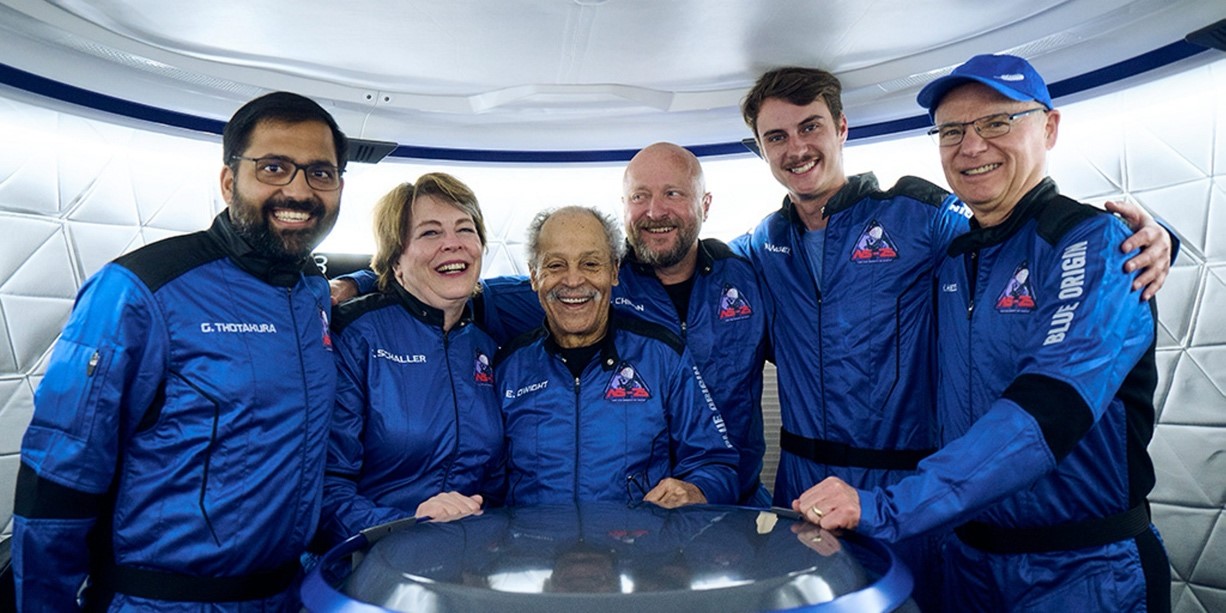Description

Source: IndianExpress
Disclaimer: Copyright infringement not intended.
Context
- Gopi Thotakura, an India-born aviator and commercial pilot based in the United States, recently became the first space tourist from India.
- He was among six space tourists on a sub-orbital flight conducted by Blue Origin, a private space company.
Details
What Are Sub-Orbital Trips?
- Sub-orbital trips involve spacecraft that cross the Karman line, which is generally considered the boundary between Earth's atmosphere and outer space at about 100 km altitude, but do not enter orbit around Earth.
- These flights:
- Achieve a maximum altitude slightly above the Karman line.
- Offer passengers a brief period of weightlessness.
- Allow for a short duration view of Earth from space.
Thotakura's Journey
- Duration:Approximately 10 minutes from takeoff to landing.
- Maximum Altitude:About 105 km above Earth.
- Experience:Passengers experienced weightlessness and observed Earth from space for a few minutes before descending back.

Longer Journeys for Space Tourists
- International Space Station (ISS):Some space tourists have orbited Earth and stayed on the ISS.
- Historical Context:The first space tourist, Dennis Tito, traveled on a Russian Soyuz spacecraft in 2001 and spent over seven days on the ISS. Between 2001 and 2009, seven tourists visited the ISS, with one, Charles Simonyi, making the trip twice.
Space Tourism Providers
Several private companies are offering space tourism opportunities, including:
- Blue Origin:Conducted Thotakura's flight and has taken 37 tourists on sub-orbital flights.
- Virgin Galactic
- SpaceX
- Axiom Space
- Zero Gravity Corporation
- Boeing and Airbus
Costs of Space Tourism
- Sub-Orbital Flights:A similar journey on a Virgin Galactic spacecraft costs about $450,000 (approximately Rs 3.75 crore).
- International Space Station:Costs between 20 to 25 million dollars (about Rs 160 to 210 crore).
- Journey Around the Moon:Estimated at 70 to 100 million dollars (about Rs 600 to 850 crore), as per a recent NASA paper.
- Currently, space tourism is accessible only to the super-rich. However, the market is expected to grow rapidly, potentially reducing costs and increasing accessibility in the future.
Sources:
IndianExpress
|
PRACTICE QUESTION
Q. Sub-orbital space flights have gained significant attention as a new frontier in space tourism. Discuss the technological, economic, and regulatory challenges associated with sub-orbital trips. Additionally, evaluate their potential impact on future space exploration and tourism. (250 Words)
|










